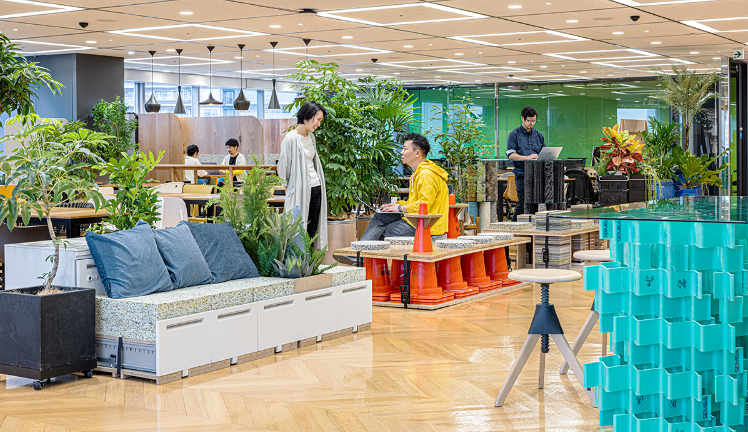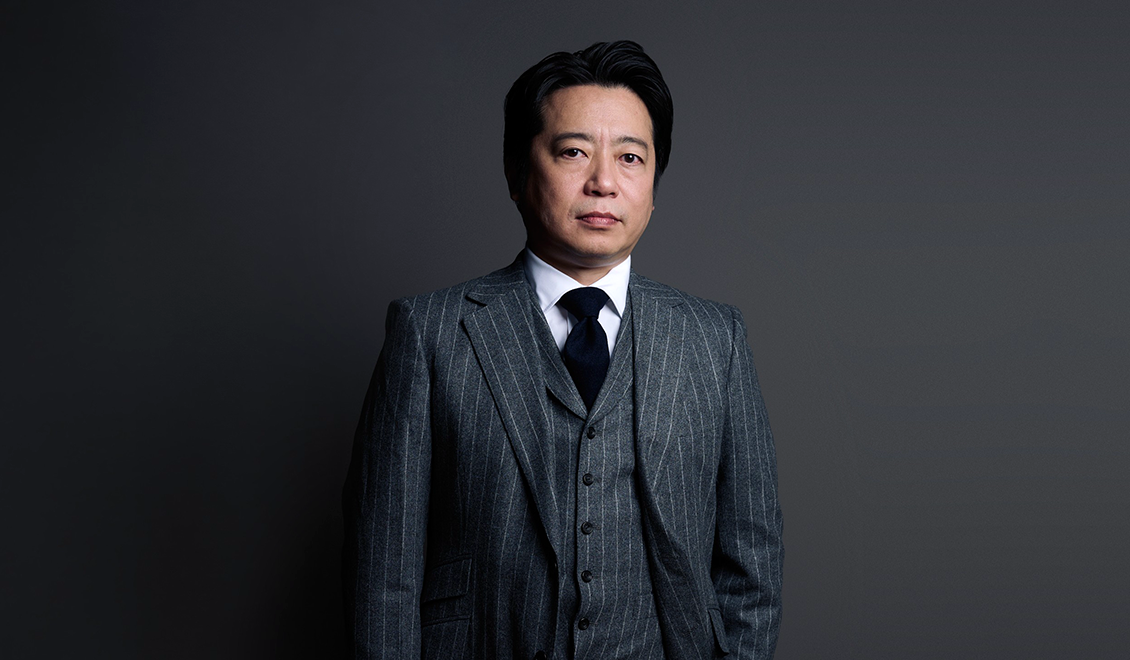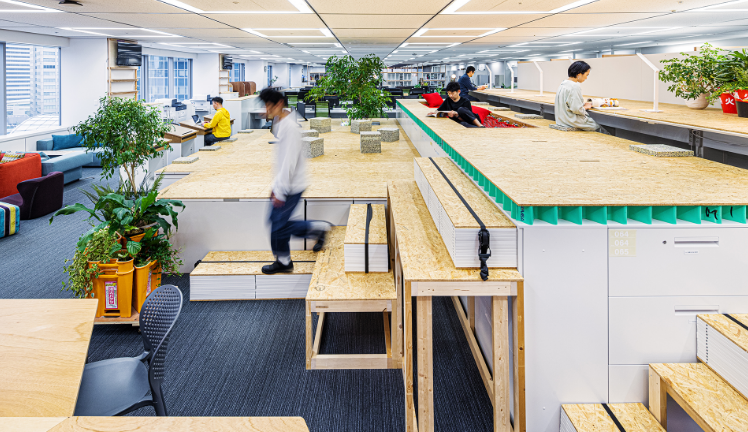The History of SEMBA
SEMBA’s Challenges
Changes in the World
〜 1959
〜 1959
|
Shiro Kuriyama, the founder, ran Kuriyama Glass Shop dealing in display cases in Kujo, Osaka since postwar period. |
|
|
Established Kuriyama Display Case Shop in Kitakyuhoji-machi, Higashi-ku (current Chuo-ku), Osaka. (1947) |
|
|
Established Semba Window Co., Ltd. (Osaka) in Higashi-ku (current Chuo-ku), Osaka, to expand its operations to interior and exterior design of commercial facilities (1951)  |
|
|
Opened Tokyo branch in Chuo-ku, Tokyo. (1958) |
The first Daiei Store (Senbayashi store) was opened. (1958) |
1960
1960
|
Daimaru Department Store was opened in Hong Kong. (1960). |
|
|
In order to develop a business specializing in store design and construction, the Tokyo branch was spun off as an independent company and Semba Window Corporation (Tokyo), current SEMBA Corporation, was established. (hereinafter referred to as Semba Window (Tokyo)) (1962) |
Odakyu Department Store was opened in Shinjuku and Tobu Department Store was opened in Ikebukuro. (1962) |
|
Transferred from the sales division of Semba Window (Osaka) to Semba Window (Tokyo). (1965) |
|
|
Established Tokyo Design Office (current Head Office). (1966) |
|
|
Established Osaka Design Office (current Kansai Branch). (1967) |
|
|
Renamed Semba Window (Tokyo) Corporation to Semba Corporation, and relocated its head office to Yaesu, Tokyo. (1968) |
Izumiya Kishiwada Shopping Center and Shibuya branch of Seibu Department Store were opened, and JUSCO was established. (1968) |
|
Expanded its business bases across the country, following the opening of the Kumamoto sales Office. (1968) |
|
|
Established Tempo Sobi Co., Ltd. (current Sobi Corporation). (1968) |
Tamagawa Takashimaya Shopping Center and Hankyu-Sanbangai were opened (1968) |
|
The Internet was invented (1969) |
1970
1970
|
Established Shopping Center Development Lab. in Osaka. (1970) |
|
|
Opened Sapporo Sales Office (current Hokkaido Branch). (1970) |
The first McDonald’s restaurant in Japan was opened in Ginza (1971) |
|
Japan Council of Shopping Center was established (1973) |
|
|
Established Sendai Branch Office (current Tohoku Branch Office) and Fukuoka Design Office (current Kyushu Branch Office). (1974)  |
|
|
7-Eleven opened the first convenience store in Japan. (1974) |
|
|
Launched the first issue of the information magazine “Communion” to disseminate information on future trends in commercial facilities. (1977)  |
1980
1980
|
Established Nagoya Branch Office (current Chubu Branch Office). (1980) |
|
|
Lalaport Funabashi Shopping Center, the first Lalaport store, was opened. (1981) |
|
|
Established its first overseas subsidiary company, Hong Kong Semba Ltd. to strengthen its overseas network base. (1984) (now closed) |
Printemps Ginza, Yurakucho Seibu, and Yurakucho Hankyu were opened. (1984) |
| Yokohama Sogo was opened. (1984) | |
|
Renamed Semba Sobi Industry Co., Ltd. to Sobi Kogyo Co., Ltd.. (1985) |
Plaza Accord |
|
The start of Economic bubble (1986~) |
|
|
Established Taiwan Semba Co., Ltd.. (1987) |
The first Hong Kong JUSCO store was opened. (1987) |
|
The first UNY Hong Kong store was opened (1987) |
|
|
Integrated its production division Sobi Kogyo and strengthened it. |
|
|
Renamed Sobi Kogyo Co., Ltd. to Sobi Corporation.. (1989) |
1990
1990
|
Established SEMBA Singapore Pte. Ltd..(1990) |
|
|
Completed SEMBA’s Izumo Industrial Complex (current Sobi’s Izumo Plant). (1991)  |
The burst of economic bubble |
|
Rio Declaration and Agenda 21 were adopted at the Earth Summit (1992) |
|
|
Japan’s first outlet mall, “Outlet Mall Rhythm”, was established. (1993) |
|
|
First year of the Internet, when Windows 95 was launched. (1995) |
|
|
The Great Hanshin-Awaji Earthquake (1995) |
|
|
Kyoto Protocol was adopted and MDGs were summarized. (1997) |
2000
2000
|
Aiming to solve the problems of developing countries through MDGs, 8 goals and 21 targets were set. (2000) |
|
|
September 11 attacks (2001) |
|
|
Urban redevelopments in central Tokyo were enhanced with the opening of Marunouchi Building, Shiodome Development, Roppongi Hills, and COREDO Nihonbashi. (2002-2004) |
|
|
Established Nonscale Corporation. (2005) |
YouTube officially launched its service. (2005) |
|
Apple launched the iPhone. (2005) |
|
|
Established SEMBA (Shanghai)CO., Ltd.. (2006) |
|
|
“H2O Retailing” was established. (2007) |
|
|
Mitsukoshi Isetan Holdings was established. (2008) |
|
|
AEON Lake Town, one of the largest shopping centers in Japan, was opened. (2008) |
|
|
The global financial crisis (2008) |
|
|
Relocated its head office to Taito, Taito-ku, Tokyo. (2009) |
2010
2010
|
Published the 50th anniversary book “People Who Think About Successful SC”. (2012)  |
|
|
Established SEMBA Vietnam Co., Ltd.. (2013) |
|
|
Established Nonscale Taipei office. (2013) |
|
|
Relocated its head office to Shibaura, Minato-ku, Tokyo. (2013) |
|
|
Listed on the Second Section of the Tokyo Stock Exchange. (2016) |
|
|
Listed on the First Section of the Tokyo Stock Exchange (2017) |
|
|
Established SEMBA Malaysia Design & Construction Sdn. Bhd. (2019) |
2020
2020
|
The global pandemic has led to widespread online communication, including teleworking (2020). |
|
|
Japan declared its commitment to archive carbon neutral growth by 2050. (2020) |
|
|
Set Ethical and digital strategies as key themes for its corporate reform. (2021) |
|
|
Established Ethical Design Division and DX Division. (2021) |
|
|
Renovated its head office into Semba Good Ethical Office. (2021). |
|
|
Developed DX strategy. (2021) |
|
|
Certified as a “DX Certified Business” as the first in the interior design industry. (2021) |
|
|
Changed listing to the Tokyo Stock Exchange Standard Market. (2022) |



